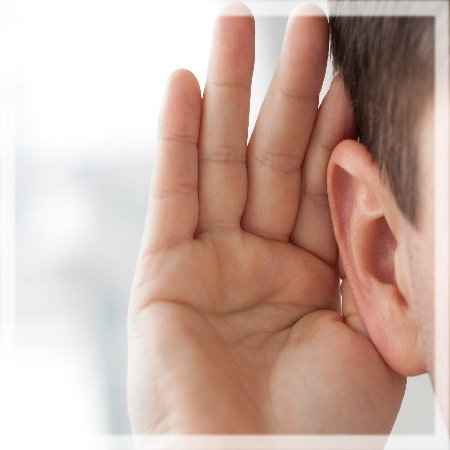Currency
June 16, 2018

About 22 million workers are exposed to hazardous noise each year, according to a recent report from the International Safety Equipment Association (ISEA), making hearing loss the third-most common chronic physical condition among adults.
How loud is too loud? Workers exposed to workplace noises higher than 85 decibels (dBA) averaged over eight hours should wear hearing protection, according to the National Institute of Occupational Safety and Health (NIOSH). For every 3 dB above 85 dBA, permissible exposure time is cut in half. So, noise exposure at 85 dBA for 8 hours is the same as 100 dBA for 15 minutes.
Everyday noises are more dangerous than people realize:
Carpenters’ daily noise exposure: 85-107 dBA
Farmers’ daily noise exposure: 85-90 dBA
Groundskeepers: 82-102 dBA
A forklift in a warehouse is 96 dBA
A jackhammer is 105 dBA
A belt sander is 93 dBA
A leaf blower is 90 dBA

Permanent noise-induced hearing loss is irreversible, but it's usually preventable with proper hearing protection.
Hearing loss is often associated with depression, according to NIOSH. Depressed people are also less likely to participate in activities with others, so the effects of hearing loss and depression compound and intensify isolation. Hearing loss is also associated with cognitive decline, which includes loss of memory and thinking skills.
Often those with hearing loss also have “ringing in the ears” (tinnitus). It can be an annoying buzzing, rushing or ringing noise in the ears or in the head. For some people, tinnitus is more than annoying and can disrupt sleep and concentration, increasing fatigue and affecting alertness. The symptoms can be intermittent or continuous. Like hearing loss, tinnitus can also impact mental health and is associated with depression and anxiety.
NIOSH says one way to measure the impact of hearing loss on communication and mental health is to calculate disability-adjusted life years (DALYs).3 This is the number of healthy years lost due to a disease or other health condition. For a condition like hearing loss, it doesn’t mean that a person dies younger, but rather that a person has fewer years of good health. The DALYs calculation takes into account life limitations caused by hearing loss as a lost portion of a healthy year of life.
In a 2016 CDC report, NIOSH used DALYs to estimate the impact of hearing loss on quality of life over nine years.4 They examined noise-exposed workers because they have a higher risk of hearing loss. In the paper, NIOSH estimated the number of healthy years lost for every 1,000 workers each year. They also looked at each industry sector separately.
The study found that 2.5 healthy years were lost each year for every 1,000 noise-exposed U.S. workers because of hearing impairment (hearing loss that impacts day-to-day activities). These lost years were shared among the 13 percent of workers with hearing impairment (about 130 workers out of each 1,000 workers). Mining, construction and manufacturing workers lost more healthy years than workers in other industry sectors; specifically and respectively in those sectors, 3.5, 3.1 and 2.7 healthy years were lost each year for every 1,000 workers.
www.hearingatwork.org
https://blogs.cdc.gov/niosh-science-blog/2016/02/08/noise/
https://blogs.cdc.gov/niosh-science-blog/2016/04/27/hearing-loss-years-lost/
https://www.cdc.gov/mmwr/volumes/65/wr/mm6515a2.htm?s_cid=mm6515a2_e
How loud is too loud? Workers exposed to workplace noises higher than 85 decibels (dBA) averaged over eight hours should wear hearing protection, according to the National Institute of Occupational Safety and Health (NIOSH). For every 3 dB above 85 dBA, permissible exposure time is cut in half. So, noise exposure at 85 dBA for 8 hours is the same as 100 dBA for 15 minutes.
Everyday noises are more dangerous than people realize:

Permanent noise-induced hearing loss is irreversible, but it's usually preventable with proper hearing protection.
Mental health impact
Hearing loss is often associated with depression, according to NIOSH. Depressed people are also less likely to participate in activities with others, so the effects of hearing loss and depression compound and intensify isolation. Hearing loss is also associated with cognitive decline, which includes loss of memory and thinking skills.
Often those with hearing loss also have “ringing in the ears” (tinnitus). It can be an annoying buzzing, rushing or ringing noise in the ears or in the head. For some people, tinnitus is more than annoying and can disrupt sleep and concentration, increasing fatigue and affecting alertness. The symptoms can be intermittent or continuous. Like hearing loss, tinnitus can also impact mental health and is associated with depression and anxiety.
NIOSH says one way to measure the impact of hearing loss on communication and mental health is to calculate disability-adjusted life years (DALYs).3 This is the number of healthy years lost due to a disease or other health condition. For a condition like hearing loss, it doesn’t mean that a person dies younger, but rather that a person has fewer years of good health. The DALYs calculation takes into account life limitations caused by hearing loss as a lost portion of a healthy year of life.
In a 2016 CDC report, NIOSH used DALYs to estimate the impact of hearing loss on quality of life over nine years.4 They examined noise-exposed workers because they have a higher risk of hearing loss. In the paper, NIOSH estimated the number of healthy years lost for every 1,000 workers each year. They also looked at each industry sector separately.
The study found that 2.5 healthy years were lost each year for every 1,000 noise-exposed U.S. workers because of hearing impairment (hearing loss that impacts day-to-day activities). These lost years were shared among the 13 percent of workers with hearing impairment (about 130 workers out of each 1,000 workers). Mining, construction and manufacturing workers lost more healthy years than workers in other industry sectors; specifically and respectively in those sectors, 3.5, 3.1 and 2.7 healthy years were lost each year for every 1,000 workers.









